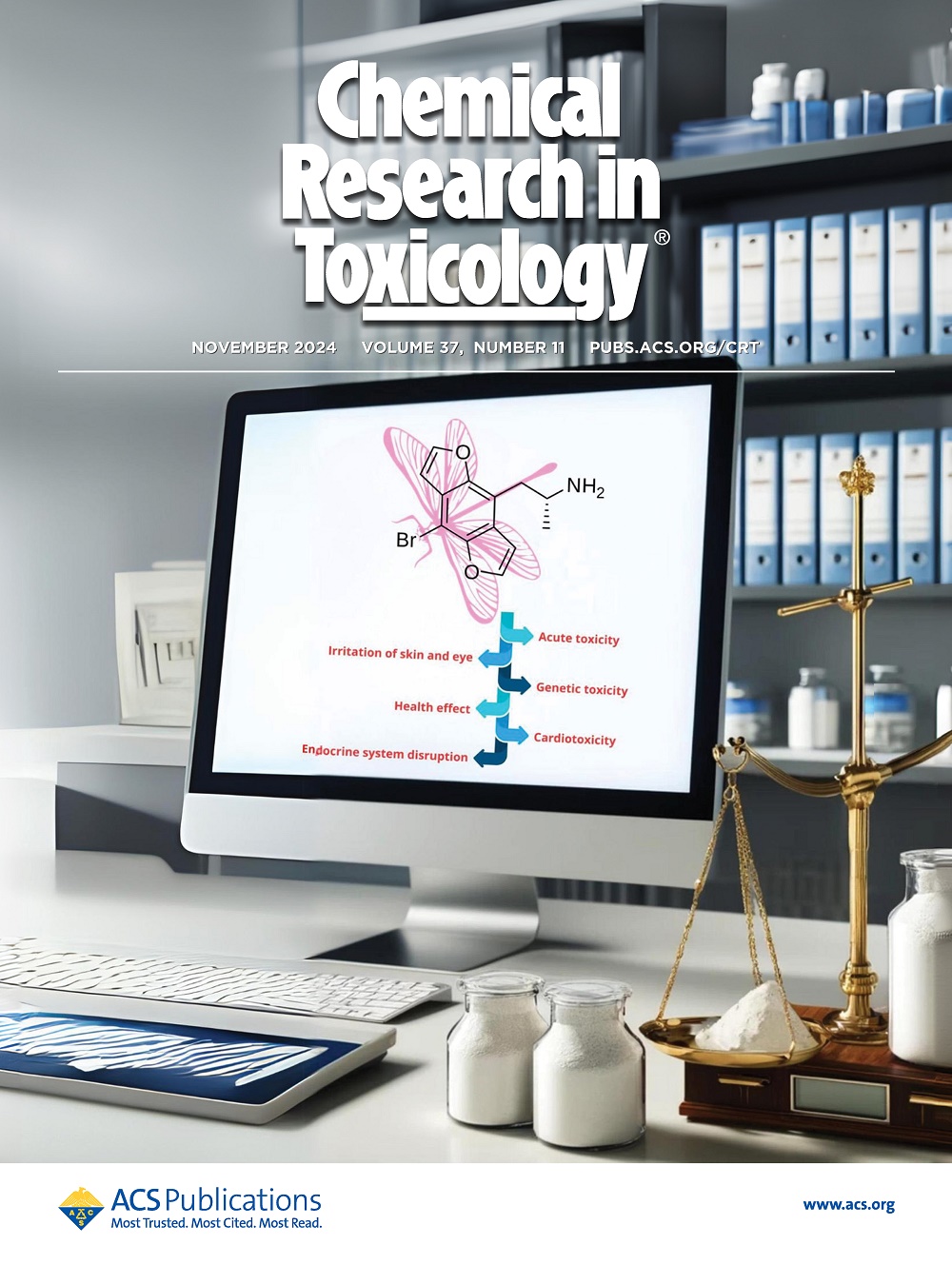短期暴露于食物中的异雌激素会影响乳腺癌细胞形态和与体外转移行为相关的运动性
IF 3.7
3区 医学
Q2 CHEMISTRY, MEDICINAL
引用次数: 0
摘要
乳腺癌极易形成转移。在疾病进展期间,肿瘤的病理生理学会受到内源性因素(如荷尔蒙状态)以及环境暴露(如与饮食和生活方式有关的暴露)的影响。新的证据表明,食源性干扰内分泌的化学物质可能在这方面发挥作用;然而,人们对其机理的了解仍然有限。在分子水平上,转移形成的关键步骤包括细胞结构变化、粘附性改变以及参与运动的细胞骨架蛋白重组。因此,本研究调查了膳食异雌激素影响乳腺癌细胞机械传导的某些方面的潜力。实验以转移级联的开始为模型,重点研究细胞与基质的粘附、单细胞迁移和细胞形态的适应。实验中使用了膳食雌激素交替二醇(AOH,1 μM)和α-玉米赤霉醇(α-ZEL,10 nM)、大豆异黄酮染料木素(GEN,1 μM)以及食品包装增塑剂双酚 A(BPA,10 nM)作为单一化合物或混合物。为了验证内分泌活性分子对细胞功能的影响可能超出雌激素受体依赖性级联反应的假设,实验将 MCF-7 细胞系与三阴性乳腺癌细胞 MDA MB-231 进行了比较。事实上,这四种化合物在功能上影响了两种细胞的运动性和粘附性。这些反应与肌动蛋白细胞骨架的重新排列以及整合素β1和酪蛋白酶D的表达调节相一致。从机理上讲,分子动力学模拟证实了与α1和β1整合素亚基片段的潜在相互作用。总之,事实证明膳食异雌激素能有效改变乳腺癌细胞的运动性和粘附性,这是体外转移行为的预测终点。这些作用在短时间(1 或 8 小时)的培养后即可测量到,有助于揭示具有激素模拟潜力的化合物在乳腺癌进展中的活性。本文章由计算机程序翻译,如有差异,请以英文原文为准。
Short-Term Exposure to Foodborne Xenoestrogens Affects Breast Cancer Cell Morphology and Motility Relevant for Metastatic Behavior In Vitro.
Breast cancer is highly susceptible to metastasis formation. During the time of disease progression, tumor pathophysiology can be impacted by endogenous factors, like hormonal status, as well as by environmental exposures, such as those related to diet and lifestyle. New lines of evidence point toward a potential role for foodborne endocrine disruptive chemicals in this respect; however, mechanistic understanding remains limited. At the molecular level, crucial steps toward metastasis formation include cell structural changes, alteration of adhesion, and reorganization of cytoskeletal proteins involved in motility. Hence, this study investigates the potential of dietary xenoestrogens to impact selected aspects of breast cancer cell mechanotransduction. Taking the onset of the metastatic cascade as a model, experiments focused on cell-matrix adhesion, single-cell migration, and adaptation of cell morphology. Dietary mycoestrogens alternariol (AOH, 1 μM) and α-zearalenol (α-ZEL, 10 nM), soy isoflavone genistein (GEN, 1 μM), and food packaging plasticizer bisphenol A (BPA, 10 nM) were applied as single compounds or in mixtures. Pursuing the hypothesis that endocrine active molecules could affect cell functions beyond the estrogen receptor-dependent cascade, experiments were performed comparing the MCF-7 cell line to the triple negative breast cancer cells MDA MB-231. Indeed, the four compounds functionally affected the motility and the adhesion of both cell types. These responses were coherent with rearrangements of the actin cytoskeleton and with the modulation of the expression of integrin β1 and cathepsin D. Mechanistically, molecular dynamics simulations confirmed a potential interaction with fragments of the α1 and β1 integrin subunits. In sum, dietary xenoestrogens proved effective in modifying the motility and adhesion of breast cancer cells, as predictive end points for metastatic behavior in vitro. These effects were measurable after short incubation times (1 or 8 h) and contribute to shed novel light on the activity of compounds with hormonal mimicry potential in breast cancer progression.
求助全文
通过发布文献求助,成功后即可免费获取论文全文。
去求助
来源期刊
CiteScore
7.90
自引率
7.30%
发文量
215
审稿时长
3.5 months
期刊介绍:
Chemical Research in Toxicology publishes Articles, Rapid Reports, Chemical Profiles, Reviews, Perspectives, Letters to the Editor, and ToxWatch on a wide range of topics in Toxicology that inform a chemical and molecular understanding and capacity to predict biological outcomes on the basis of structures and processes. The overarching goal of activities reported in the Journal are to provide knowledge and innovative approaches needed to promote intelligent solutions for human safety and ecosystem preservation. The journal emphasizes insight concerning mechanisms of toxicity over phenomenological observations. It upholds rigorous chemical, physical and mathematical standards for characterization and application of modern techniques.

 求助内容:
求助内容: 应助结果提醒方式:
应助结果提醒方式:


